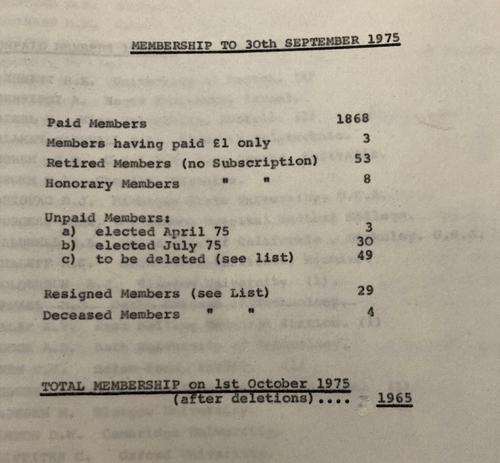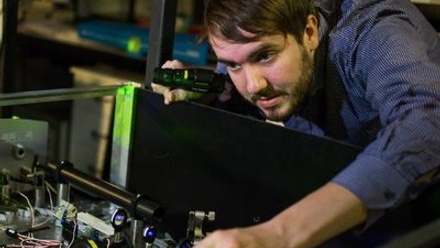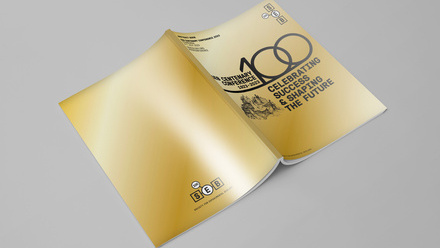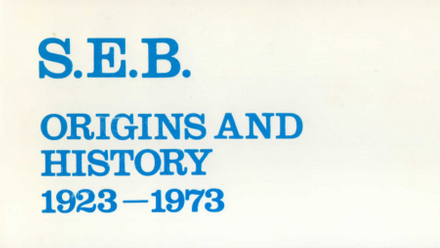Centenary Conference Wine & Wisdom Trail: Quiz and Answers
Test your knowledge about SEB history through this fun quiz!
This was created for the Wine & Wisdom Trail featured at the Centenary Conference 2023 in Edinburgh. Whether you took part in the Wine & Wisdom or not, you can access all the questions and extended answers here.
Which famous science fiction author was a founding member of the SEB?
a) H.G. Wells
b) Mary Shelley
c) George Orwell
Answer
a) H. G. Wells
H. G. Wells is listed as one of the original members of the SEB in M. A. Sleigh’s “Aspects of History of the Society for Experimental Biology” 1966. As well as his huge catalogue of science fiction books, HG Wells also wrote a number of biology textbooks, including “The Science of Life”, which he co-wrote with one of the founders of the SEB, Julian Huxley. This is widely considered the first modern textbook, and reprints of the work remain a popular introduction to biological sciences.
Read more about the SEB history: https://www.sebiology.org/centenary/seb-history.html
Where was the first international SEB meeting held?
a) Seville
b) Utrecht
c) Florence
Answer
b) Utrecht
The first SEB meeting to be held outside of the UK was in Utrecht, Netherlands in 1947. As this was shortly after world war two it was the first opportunity that an international community of scientists could meet in person to discuss their research.
Learn more about SEB history: https://www.sebiology.org/centenary/seb-history.html
Which was the first SEB Journal to be published?
a) Journal of Experimental Biology
b) Conservation Physiology
c) Journal of Experimental Botany
Answer
c) Journal of Experimental Botany
The Journal of Experimental Botany (JXB) was the first journal published by the SEB in 1949 following the formation of a plant biology subcommittee in the SEB. They were tasked with deciding how the society could better serve our community of plant biologists. JXB covers research on plant biology, focusing on molecular physiology, molecular genetics, and environmental physiology.
Since then, we have published four other journals:
It is a common misconception that The Journal of Experimental Biology is owned by the SEB; it is, in fact, a Company of Biology publication. However, the SEB maintains very close ties with the journal as it was founded in the same year by the same group of researchers.
Learn more about the history of the SEB journal here: https://www.sebiology.org/resource/the-seb-s-scientific-journals.html
What are the names of the three scientific sections of the SEB?
a) Zoology, Botany, and Cytology
b) Animal, Plant, and Cell
c) Anthropology, Physiology, and Conservation
Answer
b) Animal, Plant, and Cell
The SEB has three scientific sections; Animal, Plant and Cell. Each section has a number of special interest groups covering different areas of specialism that any SEB member is welcome to join. These interest groups help to organise sessions at our Annual Conference and our Symposia. Each interest group is headed by a group convenor and, along with our co-opted member, make up a section committee.
- Animal: Felix Mark
- Plant: Stefan Kepinski
- Cell: David Evans
Learn more about the sections here: https://www.sebiology.org/membership/special-interest-groups.html
PS: If you are attending the Centenary Conference, you can learn more about each section by chatting to our section chairs this week.
When was the SEB founded?
a) 1823
b) 1923
c) 1973
Answer
b) 1923
The SEB was founded in 1923, which means this year is the 100th anniversary of the Society. We have a whole range of activities and initiatives happening throughout the year for you to get involved. Make sure to visit the SEB stand to find out more, or visit our website https://www.sebiology.org/centenary to learn about all the initiatives and events we have going on!
What year was the first SEB Annual Lecture Award presented?
a) 1951
b) 1961
c) 1971
Answer
c) 1971
In 1969, SEB Council decided to hold an Annual Lecture delivered at the “Christmas Meeting” by a distinguished member of the Society.
The Company of Biologists agreed to finance a monetary award for this and publish the lecture in the Journal of Experimental Biology for no charge to the SEB. It was later decided that if the lecture was on the topic of plant biology, Journal of Experimental Botany should publish the paper.
This became known as the Bidder Lectures. In 1971 The first Bidder Lecture was presented. The award was later expanded to include a lecture from each scientific section of the society. Nowadays, each year at the Annual Conference of the SEB, the work of George Parker Bidder III and Harold Woolhouse is honoured with plenary lectures alongside the Cell Biology plenary lecture.
Learn more about the history of the Bidder Lectures here: https://www.sebiology.org/resource/a-visit-to-the-seb-archives.html
Who were the founding members of the SEB?
a) Lancelot Hogben, Julian Huxley, Francis Crew
b) Lancelot Hogben, Edward Sharpey-Schafer, Francis Crew
c) Lancelot Hogben, Julian Huxley, Edward Sharpey-Schafer
Answer
a) Lancelot Hogben, Julian Huxley, and Francis Crew
In 1919, Julian Huxley acquired a position at the Zoology Department of Oxford University, and later that year produced a paper describing how he had induced metamorphosis in axolotl tadpoles through thyroid feeding. He consulted Lancelot Hogben, a lecture of zoology at Imperial college of science who read the “draft with great interest” and repeated Huxley’s experiments confirming his findings. The two developed both a friendship and working relationship, collaborating on a paper on amphibian metamorphosis in 1922.
Separately to this, Francis “Frank” Crew had returned from WW1 having served in the Royal Army Medical Corps no longer wishing to practice medicine and so began pursuing a career in experimental zoological research. In 1920 he was appointed the director of the Animal Breeding Research Department (ABRD) in Edinburgh where he pursued his research focused on physiological genetics and intersexes in vertebrates, an area of interest also shared by Huxley. The two became acquainted and began a collaborative research project looking at the effect thyroid feeding in fowls. Huxley used this new friendship with Crew to persuade him to hire Hogben at the ABRD.
Read more about the SEB founding members: https://www.sebiology.org/resource/who-were-the-founding-members-of-the-seb.html
How many scientific journals does the SEB own?
a) 4
b) 5
c) 6
Answer
b) 5
The Society for Experimental Biology (SEB) currently owns five peer-reviewed scientific journals.
|
Journal Title |
Journal Owner |
Journal Publisher |
Publishing Model |
Year of First Issue |
|
SEB |
Oxford University Press |
Hybrid |
1950 |
|
|
SEB & Wiley |
Wiley |
Hybrid |
1991 |
|
|
SEB, Wiley & Association of Applied Biologists |
Wiley |
Open access |
2003 |
|
|
SEB & Oxford University Press |
Oxford University Press |
Open access |
2013 |
|
|
SEB, American Society of Plant Biologists & Wiley |
Wiley |
Open access |
2017 |
Learn more about the SEB journals: https://www.sebiology.org/journals.html
In what year did SEB hold its 100th meeting?
a) 1955
b) 1968
c) 1973
Answer
a) 1955
The 100th meeting of the SEB was held at the University of Cambridge from 13 to 15 July 1955. It included a “members hobbies” exhibition where people demonstrated skills from sock knitting, yacht making, and ballroom dancing. The commemorative session was chaired by SEB founder Francis Crew. The invited speakers were: James Gray, V. H. Blackman, C. F. A. Pantin and Julian Huxley (the last was also one of the founders).
Learn more about SEB history: https://www.sebiology.org/centenary/seb-history.html
Where was the SEB 50th-anniversary meeting?
a) London
b) Edinburgh
c) Cambridge
Answer
c) Cambridge
The SEB 50th-anniversary meeting was held at the University of Cambridge from the 16th to the 19th of July 1974. It was the 157th SEB Conference or Meeting.
The list of speakers included: E. R. Trueman, J. E. Webb, T. Weiss- Fogh, P. N. R. Usherwood, H. Huddart, D.A. Dorsett, A. O. D. Willows, F. Huber, P. P. G. Bateson, R. B. Clark, H. C. Bennet-Clark, R. McN. Alexander, R. Anwyl, J. W. S. Pringle, M. Burrrows, G. Horn, J. B. Hutchinson.
Who was the first woman to become President of SEB?
a) Tracy Lawson
b) Christine Raines
c) Irene Manton
Answer
b) Christine Raines
Christine became the first female president of the SEB in 2017, during which time she worked to increase the participation of women in science and to promote diversity and inclusion in the field. On her appointment, Raines commented, "Women have played a significant role in our sections and in our council, and therefore it seems only appropriate that we would have a female President”. Her leadership directed SEB's tradition of providing opportunities for young scientists to present their research and network with their more experienced peers, ensuring there was no separation between professors, students, and post-docs within the Society and its meetings. Reflecting on her belief, she stated, “We are all one big community”. In addition to her leadership roles in the SEB Council, Raines also contributed to the history of the SEB Journals, serving as the first female editor-in-chief of the Journal of Experimental Botany. Under her editorship, the journal published novel research on topics such as the genetic engineering of plants and the regulation of photosynthesis.
Learn more about Christine and other women who have shaped the SEB: https://www.sebiology.org/resource/women-who-have-shaped-the-seb.html
When were SEB “Special Interest Groups” first formed?
a) 1963
b) 1973
c) 1983
Answer
b) 1973
A subcommittee set up in 1973 created a report on the future development of the Society. The report included a summary of members’ feedback and recommendations, which included the creation of “Special Interest Groups”. Currently, the SEB has one Outreach, Education and Diversity group and 22 scientific special interest groups covering the Society’s three sections: animal, plant and cell biology.
Learn more about the documents found in the SEB archives: https://www.sebiology.org/resource/a-visit-to-the-seb-archives.html
The SEB 50th-anniversary booklet contains a piece about “The Origins of the Society”. Which of the founders wrote this?
a) Lancelot Hogben
b) Francis Crew
c) Julian Huxley
Answer
a) Lancelot Hogben
According to Prof Michael Sleigh during an interview for the SEB Magazine Spring 2023:
“The SEB Council organised a dinner for the first Honorary Members in November, 1964. At this dinner, Lancelot Hogben gave a speech about the origins and early history of the Society. The Council felt that the contents of this speech should be recorded for posterity and James Sutcliffe, the Botanical Secretary, persuaded Hogben to write it up for publication in a Society booklet. To accompany this account of the history of the SEB up to that time, and the two were published together in 1966 in the first SEB history booklet. This was reprinted in 1973 to celebrate the 50th anniversary of the Society with additions to bring it up to date.”
Download the 50th-anniversary booklet now: https://www.sebiology.org/resource/seb-origins-and-history-1923-1973-booklet.html
And read the complete interview with Prof. Michael Sleigh (page 40): https://www.sebiology.org/news-publications/magazine/spring-magazine-2023.html
100 years of SEB history are saved in archive boxes. How many are they?
a) 52
b) 68
c) 84
Answer
b) 68
To store all the documents from the past 100 years, the SEB archive is composed of 68 boxes. Among the content found in the boxes, there are: financial statements, symposium publication books, member handbooks, meeting minutes (including handwritten ones), membership records, programme books and much more!
If you are at the SEB Centenary Conference 2023, visit the SEB Centenary stand to see some of these original documents!
Read more about the visit to the SEB archives: https://www.sebiology.org/resource/a-visit-to-the-seb-archives.html
Who has never been the editor-in-chief of SEB Journal, Plant Direct (PD)?
a) Henry Daniell
b) Ivan Baxter
c) Larry York
Answer
a) Henry Daniell
Henry Daniell was actually the editor-in-chief for one of SEB's other journals, Plant Biotechnology Journal (PBJ), from 2012 to 2023.
Plant Direct is the latest addition to the SEB’s journal portfolio, in partnership with the American Society of Plant Biologists (ASPB) and Wiley, the latter also its publisher. It is an open-access and sound science journal for the plant sciences. Plant Direct published its first paper in July 2017 under the editorship of Ivan Baxter.. In 2022, Larry York from the Oak Ridge National Laboratory assumed the role of editor-in-chief. Larry is working on harmonising processes and improving experiences for authors, reviewers, and handling editors while focusing on being a service to the community.
Read more about the history of the SEB journals: https://www.sebiology.org/resource/the-seb-s-scientific-journals.html
Which year did Alan Turing give his talk “Chemical waves in morphogenesis” at an SEB meeting?
a) 1950
b) 1951
c) 1952
Answer
c) 1952
Alan Turing gave the “Chemical waves in Morphogenesis” talk in 1952. According to the book “Alan Turing’s Manchester” written by Jonathan Swinton: “Turing talked again in 1952 at a Manchester meeting of the Society for Experimental Biology, but for all his ambitions to explain zebra stripes, Turing made no headway in the Zoology Department.” In the SEB Symposia Book of 1953 entitled “Evolution”, there is a paper by John William Sutton Pringle, “The Origin of Life”, which highlights Alan’s contributions.
Those years weren’t easy for Alan; in 1952, he was arrested for homosexuality, which was considered illegal in England and accepted chemical castration to avoid a prison sentence. He died in 1954 from cyanide poisoning, which was ruled as suicide.
Which SEB journal is celebrating its 10th-anniversary this year?
a) Conservation Physiology
b) The Plant Journal
c) Plant Biotechnology Journal
Answer
a) Conservation Physiology
Conservation Physiology (Con Phys) is an open-access, online-only journal owned by the SEB in partnership with Oxford University Press, the journal’s publisher. The first paper in Con Phys was published in March 2013, but the journal’s official launch took place in July 2013 during the SEB’s Annual Conference in Valencia, Spain. The journal aims to engage both plant and animal scientists while giving a platform to support and disseminate the then-recent discipline named “conservation physiology”.
Con Phys is celebrating its 10th anniversary in 2023, and will host a special session at the conference titled ‘Looking backwards and forwards after a decade of Conservation Physiology’.
Conservation Physiology: https://academic.oup.com/conphys
Read more about the history of the SEB journals: https://www.sebiology.org/resource/the-seb-s-scientific-journals.html
How many members were part of the SEB in 1975?
a) 1669
b) 1965
c) 2154
Answer
b) 1965
On 1st October 1975 SEB had a total of 1965 members. See a snippet from the archives below!

Where was the SEB Annual Conference held in 2013?
a) Valencia
b) Prague
c) Salzburg
Answer
a) Valencia
The Annual Conference in Valencia took place from 3rd – 6th of July 2013 at the Palacio de Congresos de Valencia, Spain.
The Conference in Salzburg happened in the year before, 2012.
It was in 2010 and 2015 that SEB held our Conference in Prague.
The Symposium on “Carbon Dioxide Fixation” happened in 1950. Who was not among the speakers?
a) Hans Krebs
b) Hans Kornberg
c) Melvin Calvin
Answer
b) Hans Kornberg
- Hans Kornberg worked with Hans Krebs, and together they discovered the glyoxylate cycle. Kornberg was a junior laboratory technician for Krebs and graduated with a BSc Honours in Chemistry in 1949. Considering that the Symposium happened in 1950, Kornberg was still in his early years of PhD.
- Hans Krebs gave two talks during that meeting: (1) “Carbon dioxide fixation in animal tissues”, which was published as an article in the Symposia book number V – Carbon Dioxide Fixation and Photosynthesis. (2) “Manometric measurement of changes of oxygen pressure in the presence of carbon dioxide”.
- Melvin Calvin was chairman of one of the sessions and gave a talk entitled “The primary carbon dioxide fixing reactions in photosynthesis.”






